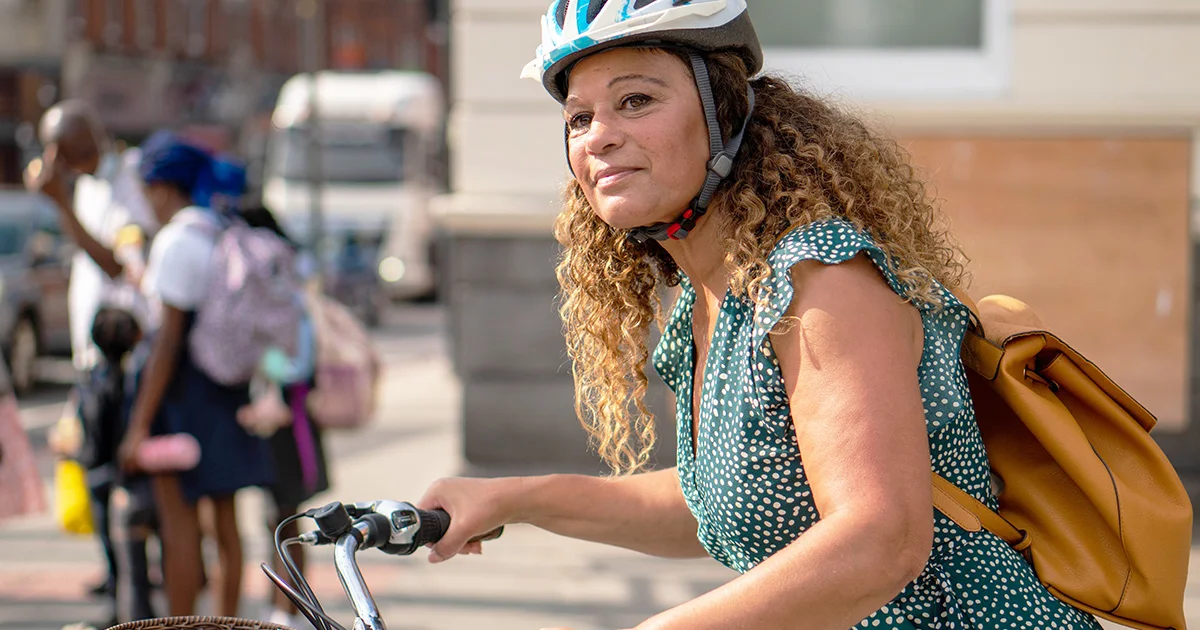Here's what we'll cover
Here's what we'll cover
Today, there are apps for everything from therapy to finding someone to cuddle with. Diet and wellness apps aren’t an anomaly. There are plenty of apps available for tracking intermittent fasting, but it can be hard to wade through and find the right one. Most intermittent fasting apps have feature options for setting healthy weight goals, tracking diet and water intake, and keeping tabs on your exercise habits. Here are eight of the best intermittent fasting apps to help you on your journey.
How do apps help with intermittent fasting and weight loss?
Using a smartphone app can help you track your progress and health in various ways. Many people find it easier and more satisfying than recording things by hand. Ease of use also leads to more consistent use over time (Rathbone, 2017). Research finds that apps also help people lose weight. In one study, 77% of thousands of participants successfully lost weight with the aid of a smartphone app. Other research observed that along with avoiding weight gain, individuals using health apps exercised more, drank fewer sugary drinks, and consumed less takeout food (Partridge, 2015). Because of the digital interface, apps are good at helping you self-monitor your diet, exercise, and weight so you can see your progress over time. When you can actually visualize each goal you hit, it also motivates you to help you keep going.
What to look for in an app
There are many different types of features depending on the app. When it comes to intermittent fasting, look for apps that have the following features (Middelweerd, 2014):
Self-monitoring: Self-monitoring is what you do with most fitness and weight tracking apps. When you sign onto the app, you enter information like weight, what you eat, how much water you drink, and how long you fast each day. Taking ownership of your choices and recording your habits can help create change.
Performance feedback: Feedback on performance be good for identifying stumbling blocks and taking meaningful steps forward. Many apps have paid versions that connect you with coaches who can give valuable feedback. Coaches often use motivational interviewing to assess where you’re at and help troubleshoot any barriers you're facing.
Goal setting: It’s common for intermittent fasting apps to include goal setting. Goal setting can be customized to focus on weight, fitness, or even sticking to a fasting schedule.
Journaling: A few apps we highlight below have journaling features. Journaling can help relieve stress and provide a space for positive self-talk to keep yourself motivated.
Stress management: Some intermittent fasting apps include articles that cover how stress can affect your diet and fasting schedule. Other topics may include how to handle stress from the news, mindful eating, and strategies for relaxing at home.
Role models: Some apps offer coaches and community support for motivation. When you see people like you achieving their goals, it can inspire you to believe in yourself. You can opt for apps that include access to coaches, social network-like forums, and success stories.
Now let's get on to eight of our favorite intermittent fasting apps.
1. Simple
What you get: Simple includes tracking for diet, exercise, weight, and water intake. Customize your fasting schedule, invite friends, and join the community. Find educational blogs and news with the free version. This app contains lots of graphs, videos, and animations to keep you engaged.
What’s missing: You can track your meals by searching for individual food items within the app's library. Unfortunately, the list is far from comprehensive, and you might not be able to find every item you're looking for. The app also falls short by not providing a way to track calories or serving sizes.
Stand-out feature: You can connect to Apple Health or a Fitbit for seamless tracking. If you have an iPhone, you can go hands-free and let Siri help you track your progress.
Cost: Free, with upgraded options that offer personalized coaching and unlock the extensive library of articles starting at $29.99 for 12 weeks. The yearly membership is $49.99.
Best for: A novice intermittent faster who is planning to change their diet and track how much they exercise.
2. Zero
What you get: Zero is packed with videos and articles from doctors, fitness coaches, registered dietitians, and other health experts. The app features preset intermittent fasting schedules—including one based on your circadian rhythm. Zero lets you log physical activity, heart rate, sleep, and blood sugar levels. You can also use the app to set reminders or push notifications to keep yourself on track.
What’s missing: There are no features for logging hydration, which is extra important when fasting.
Stand out feature: Zero includes a “Challenges” section where you can join other users in hitting goals.
Cost: Use basic features for free. A subscription for Zero Plus is $69.99 per year.
Best for: Intermittent fasting pros or people who want to learn more about the science of metabolic health.
3. Fastic
What you get: Fastic has a simple interface that includes visuals for your most recent fasts. It has a water tracker, step counter, and tips for what you can drink while fasting. Fasting plans are divided into beginner, expert, and warrior options, with multiple options available for each.
What’s missing: You only get access to nutritional information and educational content with a paid plan.
Stand-out feature: The water tracker measures in cups and is easy to use.
Cost: Free, with Fastic Plus starting at $2.98 per week for one month.
Best for: The minimalist who wants to keep their tracking simple and straightforward.
4. BodyFast
What you get: BodyFast puts weight loss front and center with graphs of your current weight, goal weight, and body mass index (BMI). Like many other apps, you can select your fasting schedule from a series of popular options. However, some plans—like the 16/8, 5:2, and Warrior Diet, you have to sign up for paid versions to access. Win trophies for hitting milestones, join their Facebook group for community engagement, and participate in fun movement challenges.
What’s missing: You can only track specific fasting plans for free. Movement and nutrition challenges are only available with the paid version.
Stand out feature: Sign up for their newsletter for nutrition tips and community updates.
Cost: Free for basic fast tracking. Get access to one month of weekly challenges and a personal fasting Coach for $16.99.
Best for: The intermittent faster who likes options.
5. Sunrise Fast
What you get: Sunrise Fast is a simple app that primarily tracks fasting periods. You can manually enter start and end times based on popular fasts, like the 16/8, and track completed fasts over time using the history feature. You can also find free blogs, articles, and videos in the Learn section.
What’s missing: You’ll need to track hydration and meals somewhere else.
Stand-out feature: The app allows you to track your mood, an important indicator of how well you’re tolerating periods of fasting.
Cost: Free.
Best for: The intermittent faster who isn't focused on meals specifically.
Available on: iPhone
6. Life
What you get: With the Life Fasting app, you can enter daily fasts, pay to speak with a fasting coach, and join group sessions for support while you fast. Though diet and hydration are not front and center, the Marketplace section has assessments, calculators, and tests for exploring macros in your diet, stress levels, and maximum heart rate.
What’s missing: You can’t track exercise habits or log meals.
Stand-out feature: Life focuses on community benefits with their “Circles” feature, which allows you to join in-app groups for social support while you fast. You can even create your own and invite friends.
Cost: Free, but getting access to coaches costs money.
Best for: Looking for a fasting buddy? Check out Life.
7. Fast Habit
What you get: Fast Habit allows you to track your fasting schedule, manually adjust start and end times, and analyze data over time. You can set reminders to let you know when your fast is about to start.
What’s missing: For more fasting-related statistics and weight tracking you have to upgrade to the pro version.
Stand-out feature: The interface is straightforward and easy to use.
Cost: Free. Fast Habit Pro is available for a one-time fee of $2.99.
Best for: A first-time faster. Start small before adding other variables like diet and exercise.
Available on: iPhone
8. Window
What you get: Window offers many popular fasting plans including 12/12, 14/10, 16/8, the Warrior Diet, and One Meal a Day. You can log mood, meals, water intake, and daily reflections in the Journal section. Window allows you to set healthy weight goals and watch your progress on graphs. There's also a Learn section with articles and high-quality research where you can learn more about things like what happens to blood sugar during fasting.
What’s missing: Community support groups.
Stand-out feature: When you select a fasting plan, you get healthy meal suggestions and snack choices.
Cost: Start with a free 7-day trial, and then pay $9.99 per month or $39.99 for a yearly subscription.
Best for: The independent faster who doesn’t need coaches or community support.
What does the research say?
There isn't much research that looks specifically at intermittent fasting apps, but what studies have been done show apps can make a difference.
While some people may see improvements in diet, exercise, and weight management, it's important to remember that intermittent fasting isn't for everybody. If you are currently pregnant or breastfeeding, or if you plan to become pregnant, fasting isn’t recommended (Grajower, 2019). If you have type I diabetes or a history of disordered eating, avoid intermittent fasting (Ganesan, 2018). For those who need to take medications with food, intermittent fasting can be challenging—especially if your medication schedule overlaps with your fasting schedule.
Additionally, people with type 2 diabetes need to be under the care of a healthcare provider if they choose to fast to help manage timing, dosages, and fluid intake (Grajower, 2019).
Making additional lifestyle changes, like walking, yoga, or starting an exercise program, can enhance your health and wellbeing in addition to fasting.
DISCLAIMER
If you have any medical questions or concerns, please talk to your healthcare provider. The articles on Health Guide are underpinned by peer-reviewed research and information drawn from medical societies and governmental agencies. However, they are not a substitute for professional medical advice, diagnosis, or treatment.
Bhutani, S., Klempel, M.C., Kroeger, C.M., Trepanowski, J.F. & Varady, K.A. (2013). Alternate day fasting and endurance exercise combine to reduce body weight and favorably alter plasma lipids in obese humans. Obesity, 21, 1370-1379. doi:10.1002/oby.20353. Retrieved from https://onlinelibrary.wiley.com/doi/full/10.1002/oby.20353
Carter, M. C., Burley, V. J., Nykjaer, C., & Cade, J. E. (2013). Adherence to a smartphone application for weight loss compared to website and paper diary: pilot randomized controlled trial. Journal of Medical Internet Research, 15( 4), e32. doi:10.2196/jmir.2283. Retrieved from https://www.ncbi.nlm.nih.gov/pmc/articles/PMC3636323/
Chin, S. O., Keum, C., Woo, J., Park, J., Choi, H. J., & Woo, J. T. et al. (2016). Successful weight reduction and maintenance by using a smartphone application in those with overweight and obesity. Scientific Reports , 6, 34563. doi: 10.1038/srep34563. Retrieved from https://www.ncbi.nlm.nih.gov/pmc/articles/PMC5098151/
Direito, A., Dale, L. P., Shields, E., Dobson, R., Whittaker, R., & Maddison, R. (2014). Do physical activity and dietary smartphone applications incorporate evidence-based behaviour change techniques?. BMC Public Health , 14, 646. doi: 10.1186/1471-2458-14-646. Retrieved from https://www.ncbi.nlm.nih.gov/pmc/articles/PMC4080693/
Ganesan, K., Habboush, Y., & Sultan, S. (2018). Intermittent Fasting: The Choice for a Healthier Lifestyle. Cureus, 10 (7), e2947. doi:10.7759/cureus.2947. Retrieved from https://www.ncbi.nlm.nih.gov/pmc/articles/PMC6128599/
Gill, S., & Panda, S. (2015). A Smartphone App Reveals Erratic Diurnal Eating Patterns in Humans that Can Be Modulated for Health Benefits. Cell Metabolism, 22 (5), 789–798. doi: 10.1016/j.cmet.2015.09.005. Retrieved from https://www.ncbi.nlm.nih.gov/pmc/articles/PMC4635036/
Glynn, L. G., Hayes, P. S., Casey, M., Glynn, F., Alvarez-Iglesias, A., & Newell, J. et al. (2014). Effectiveness of a smartphone application to promote physical activity in primary care: the SMART MOVE randomised controlled trial. The British Journal of General Practice, 64 (624), e384–e391. doi: 10.3399/bjgp14X680461. Retrieved from https://www.ncbi.nlm.nih.gov/pmc/articles/PMC4073723/
Grajower, M. M., & Horne, B. D. (2019). Clinical Management of Intermittent Fasting in Patients with Diabetes Mellitus. Nutrients, 11 (4), 873. doi: 10.3390/nu11040873. Retrieved from https://www.ncbi.nlm.nih.gov/pmc/articles/PMC6521152/
Harvie, M. N., Pegington, M., Mattson, M. P., Frystyk, J., Dillon, B., & Evans, G. et al. (2011). The effects of intermittent or continuous energy restriction on weight loss and metabolic disease risk markers: a randomized trial in young overweight women. International Journal of Obesity, 35 (5), 714–727. doi:10.1038/ijo.2010.171. Retrieved from https://www.ncbi.nlm.nih.gov/pmc/articles/PMC3017674/
Malinowski, B., Zalewska, K., Węsierska, A., Sokołowska, M. M., Socha, M., & Liczner, G. et al. (2019). Intermittent Fasting in Cardiovascular Disorders-An Overview. Nutrients, 11 (3), 673. doi: 10.3390/nu11030673. Retrieved from https://www.ncbi.nlm.nih.gov/pmc/articles/PMC6471315/
Middelweerd, A., Mollee, J. S., van der Wal, C. N., Brug, J., & Te Velde, S. J. (2014). Apps to promote physical activity among adults: a review and content analysis. The International Journal of Behavioral Nutrition and Physical Activity , 11, 97. doi: 10.1186/s12966-014-0097-9. Retrieved from https://www.ncbi.nlm.nih.gov/pmc/articles/PMC4132213/
Milne-Ives, M., Lam, C., De Cock, C., Van Velthoven, M. H., & Meinert, E. (2020). Mobile Apps for Health Behavior Change in Physical Activity, Diet, Drug and Alcohol Use, and Mental Health: Systematic Review. JMIR MHealth and MHealth, 8 (3), e17046. doi: 10.2196/17046. Retrieved from https://www.ncbi.nlm.nih.gov/pmc/articles/PMC7113799/
Partridge, S. R., McGeechan, K., Hebden, L., Balestracci, K., Wong, A. T., & Denney-Wilson, E. et al. (2015). Effectiveness of a mHealth Lifestyle Program With Telephone Support (TXT2BFiT) to Prevent Unhealthy Weight Gain in Young Adults: Randomized Controlled Trial. JMIR MHealth and UHealth, 3 (2), e66. doi:10.2196/mhealth.4530. Retrieved from https://www.ncbi.nlm.nih.gov/pmc/articles/PMC4526939/
Phillips, M. (2019). Fasting as a Therapy in Neurological Disease. Nutrients, 11 (10), 2501. doi: 10.3390/nu11102501. Retrieved from https://www.ncbi.nlm.nih.gov/pmc/articles/PMC6836141/
Pradhan, G., Samson, S. L., & Sun, Y. (2013). Ghrelin: much more than a hunger hormone. Current Opinion in Clinical Nutrition and Metabolic Care, 16 (6), 619–624. doi: 10.1097/MCO.0b013e328365b9be. Retrieved from https://www.ncbi.nlm.nih.gov/pmc/articles/PMC4049314/#:~:text=Ghrelin%20is%20a%20multifaceted%20gut,as%20the%20%E2%80%9Chunger%20hormone%E2%80%9D
Rathbone, A. L., & Prescott, J. (2017). The Use of Mobile Apps and SMS Messaging as Physical and Mental Health Interventions: Systematic Review. Journal of Medical Internet Research, 19 (8), e295. doi: 10.2196/jmir.7740. Retrieved from https://www.ncbi.nlm.nih.gov/pmc/articles/PMC5590007/
Rynders, C. A., Thomas, E. A., Zaman, A., Pan, Z., Catenacci, V. A., & Melanson, E. L. (2019). Effectiveness of Intermittent Fasting and Time-Restricted Feeding Compared to Continuous Energy Restriction for Weight Loss. Nutrients, 11 (10), 2442. doi: 10.3390/nu11102442. Retrieved from https://www.ncbi.nlm.nih.gov/pmc/articles/PMC6836017/
Schoeppe, S., Alley, S., Van Lippevelde, W., Bray, N. A., Williams, S. L., & Duncan, M. J. et al. (2016). Efficacy of interventions that use apps to improve diet, physical activity and sedentary behaviour: a systematic review. The International Journal of Behavioral Nutrition and Physical Activity, 13 (1), 127. doi: 10.1186/s12966-016-0454-y. Retrieved from https://www.ncbi.nlm.nih.gov/pmc/articles/PMC5142356/
Stockman, M. C., Thomas, D., Burke, J., & Apovian, C. M. (2018). Intermittent Fasting: Is the Wait Worth the Weight? Current Obesity Reports , 7(2), 172–185. doi: 10.1007/s13679-018-0308-9. Retrieved from https://www.ncbi.nlm.nih.gov/pmc/articles/PMC5959807/
Tinsley, G.M & La Bounty, P.M. (2015). Effects of intermittent fasting on body composition and clinical health markers in humans. Nutrition Reviews, 73 (10), 661–674. doi: 10.1093/nutrit/nuv041. Retrieved from https://academic.oup.com/nutritionreviews/article/73/10/661/1849182










